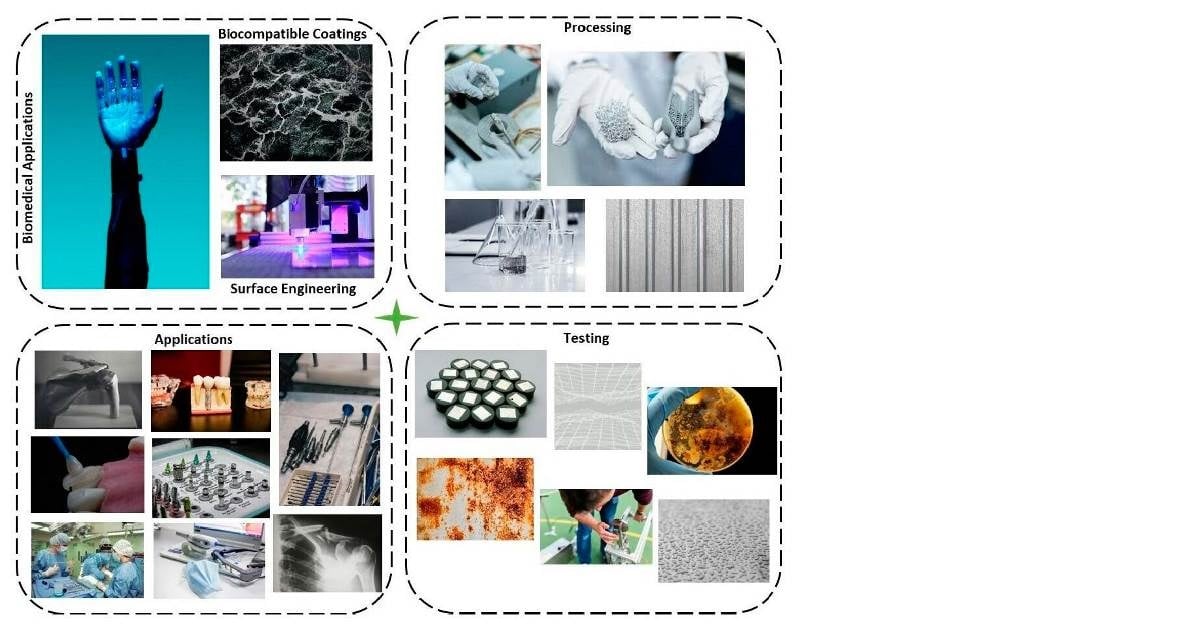Advances in Surface Engineering and Biocompatible Coatings for Biomedical Applications, 2nd Edition
A special issue of Coatings (ISSN 2079-6412). This special issue belongs to the section "Surface Coatings for Biomedicine and Bioengineering".
Deadline for manuscript submissions: 31 March 2026 | Viewed by 14854

Special Issue Editors
Interests: surface engineering; composites; materials science; biomaterials; mechanical behavior
Special Issues, Collections and Topics in MDPI journals
Interests: surface engineering; materials characterization; bioavailability; risk assessment; sustainability
Special Issues, Collections and Topics in MDPI journals
Interests: mechanical surface treatment; tribology; materials science; biomaterials; coatings
Special Issues, Collections and Topics in MDPI journals
Special Issue Information
Dear Colleagues,
We are thrilled to announce the release of Volume II of our Special Issue, "Advances in Surface Engineering and Biocompatible Coatings for Biomedical Applications". The previous volume contained 14 published articles and garnered substantial interest, with 24056 views at the time of writing and 40 citations in less than a year. We are certain that the release of Volume II will advance the field by gathering critical reviews and cutting-edge research articles, with similar interest and success. Below is a summary of the goals, objectives, and scope of this Special Issue.
The surface characteristics of biomaterials, including roughness, wettability, antibacterial activity, chemical composition, electrical charge, crystallinity, modulus, and hardness, have a significant impact on their performance as they influence various factors, from biocompatibility to protein adsorption, anti-inflammatory properties, adhesion, and tribological and corrosion behaviours. The surface modification of bulk materials, such as metal alloys, polymers, and ceramics, is essential for addressing significant performance issues, such as a lack of osseointegration, infections, toxicity, low corrosion/wear resistance, and inadequate antibacterial activity. Modifying the surface properties of bulk materials and applying biocompatible coatings lead to significant improvements in biomaterials’ performance and longevity by altering their surface properties, showing potential for facilitating the formulation of effective strategies to tackle specific clinical requirements.
This Special Issue seeks to emphasize the recent progress in surface engineering and biocompatible coatings for biomedical applications. Our objective is to publish a minimum of ten articles of exceptional quality, at which point this Issue could be published in book format. We encourage the submission of original research articles and critical reviews on the following possible research areas (but not restricted to them):
- Mechanical and physical surface treatment, including grit blasting, polishing, shot peening, water jet shot peening, surface mechanical attrition treatment, laser peening, sputtering, laser/electron beam patterning, and plasma electrolyte oxidation;
- Chemical and electrochemical surface treatment, including etching, anodizing, sol–gel, nitriding, electrophoretic deposition, PVD, and CVD;
- Biocompatible coatings, including hydroxyapatite-, bioactive glass-, and polymer-based coatings;
- Understanding the tribological and corrosion behaviours of biomaterials.
We thank you for your interest and look forward to receiving your contributions.
Dr. Egemen Avcu
Dr. Mert Guney
Dr. Yasemin Yıldıran Avcu
Guest Editors
Dr. Mustafa Armağan
Dr. Eray Abakay
Dr. Berzah Yavuzyeğit
Guest Editor Assistants
Manuscript Submission Information
Manuscripts should be submitted online at www.mdpi.com by registering and logging in to this website. Once you are registered, click here to go to the submission form. Manuscripts can be submitted until the deadline. All submissions that pass pre-check are peer-reviewed. Accepted papers will be published continuously in the journal (as soon as accepted) and will be listed together on the special issue website. Research articles, review articles as well as short communications are invited. For planned papers, a title and short abstract (about 100 words) can be sent to the Editorial Office for announcement on this website.
Submitted manuscripts should not have been published previously, nor be under consideration for publication elsewhere (except conference proceedings papers). All manuscripts are thoroughly refereed through a single-blind peer-review process. A guide for authors and other relevant information for submission of manuscripts is available on the Instructions for Authors page. Coatings is an international peer-reviewed open access monthly journal published by MDPI.
Please visit the Instructions for Authors page before submitting a manuscript. The Article Processing Charge (APC) for publication in this open access journal is 2600 CHF (Swiss Francs). Submitted papers should be well formatted and use good English. Authors may use MDPI's English editing service prior to publication or during author revisions.
Keywords
- adhesion
- coating technology
- corrosion
- surface topography
- biocompatibility
- tribology
Benefits of Publishing in a Special Issue
- Ease of navigation: Grouping papers by topic helps scholars navigate broad scope journals more efficiently.
- Greater discoverability: Special Issues support the reach and impact of scientific research. Articles in Special Issues are more discoverable and cited more frequently.
- Expansion of research network: Special Issues facilitate connections among authors, fostering scientific collaborations.
- External promotion: Articles in Special Issues are often promoted through the journal's social media, increasing their visibility.
- Reprint: MDPI Books provides the opportunity to republish successful Special Issues in book format, both online and in print.
Further information on MDPI's Special Issue policies can be found here.







